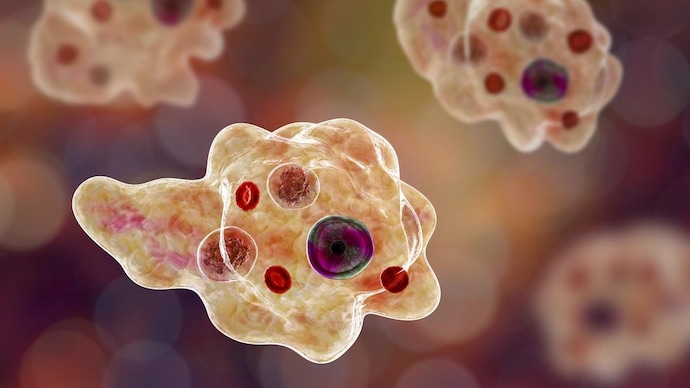South Korea reported its first case of infection from Naegleria fowleri or “brain-eating amoeba”.

Naegleria fowleri (Amoeba)
- Amoeba is a type of cell or unicellular organism that can change shape by extending and retracting pseudopods.
- Naegleria is a single-celled organism that is an amoeba, and only one of its species, Naegleria fowleri, can infect humans.
- It was discovered in 1965 in Australia and is commonly found in warm freshwater bodies such as hot springs, rivers, and lakes.
- Naegleria fowleri has been identified as the cause of PAM in over 16 countries, including India, and has been found on all continents.
How does it infect humans?
- The amoeba enters the human body through the nose and proceeds to the brain.
- This usually occurs when someone goes for a swim, dives, or even dips their head in a freshwater body.
- In some cases, people became infected after cleaning their nostrils with contaminated water, vapor, or aerosol droplets.
- When Naegleria fowleri enters the brain, it destroys brain tissues and causes primary amebic meningoencephalitis, a potentially fatal infection (PAM).
Symptoms of PAM
- According to the CDC, the first signs of PAM appear one to twelve days after infection.
- In the early stages, they may resemble meningitis symptoms such as headache, nausea, and fever.
- A stiff neck, seizures, hallucinations, and even coma can occur in the later stages.
- The infection spreads quickly and, on average, kills within five days.
How is its spread related to climate change?
- Because the amoeba thrives in warm freshwater bodies, the chances of contracting Naegleria fowleri infection will increase as global temperatures rise.
- The organism grows best at temperatures of up to 46°C and can sometimes survive at even higher temperatures.
- Several recent studies have discovered that high levels of atmospheric carbon dioxide have caused an increase in the temperature of lakes and rivers.
- These conditions are more conducive to the growth of the amoeba.
Source: https://www.cdc.gov/parasites/naegleria/general.html
